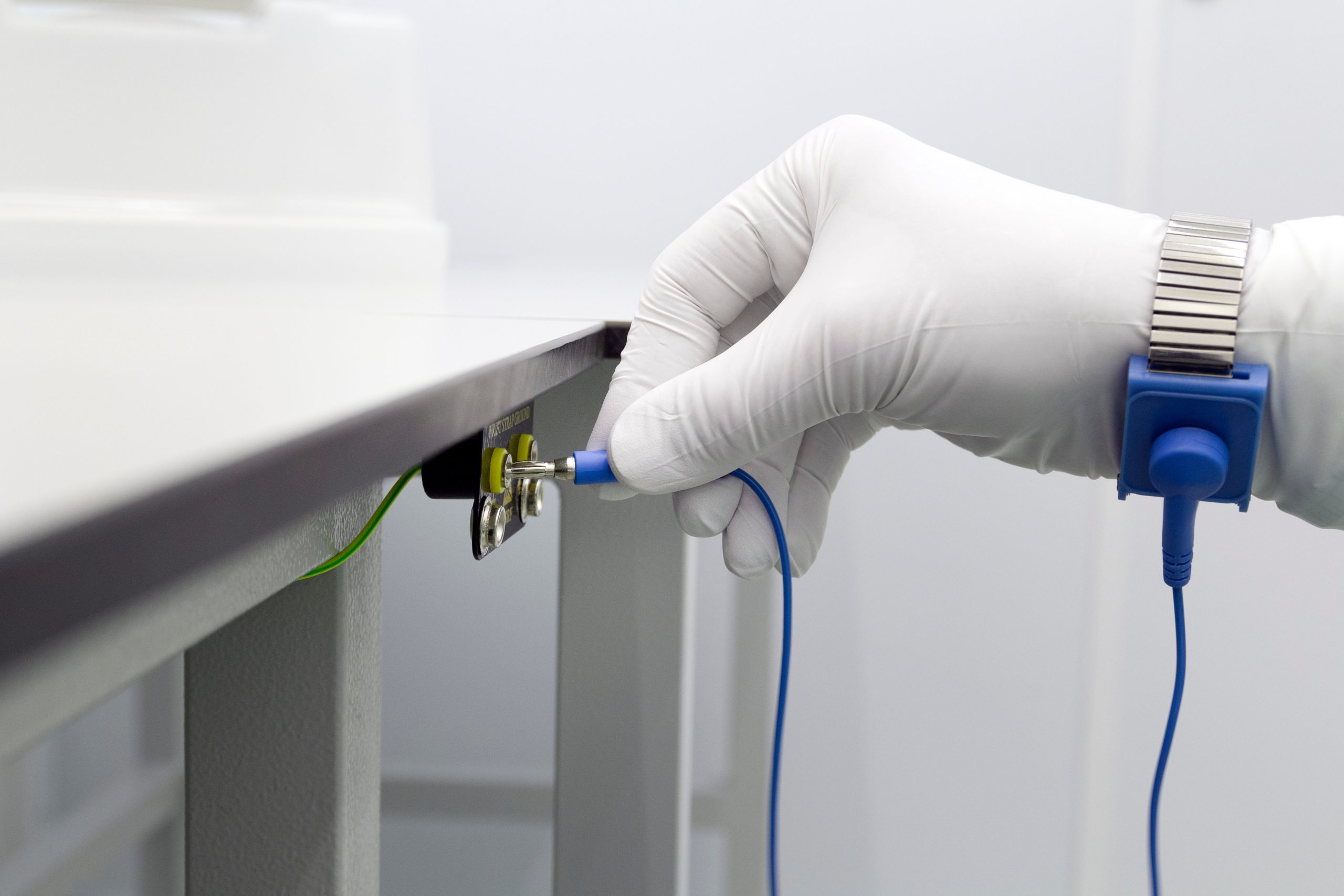In the electronics industry, electrostatic discharge (ESD) poses a significant threat to handling delicate electronic components. But there are ESD Mats and Anti-Static mats, so what’s the difference?
Electrical safety matting like ESD matting and anti-static mats are used to counter this risk and prevent the buildup and discharge of static electricity. While they may seem similar, these products have distinct differences in terms of their materials, performance, and intended applications.
But what is the difference between the two, and what will suit your specific needs for contamination control and electrostatic discharge protection?
What are ESD mats?
ESD mats are engineered to control and dissipate static electricity buildup, protecting sensitive electronic components and equipment from potential damage caused by electrostatic discharge events.
Electrostatic discharge mats are constructed with conductive or static dissipative materials that allow the controlled transfer of electrostatic charges from personnel or objects to a grounded surface like the floor, preventing the accumulation of harmful static electricity.
With low resistance, ESD mats excel in environments where electrostatic discharge poses a significant risk, such as electronics manufacturing facilities, laboratories, and cleanrooms. These mats uphold static-free workspaces by utilizing a reliable path to ground, safeguarding delicate electronic devices from potential damage.
What are Anti-Static mats?
Anti static matting is a preventative measure designed to control and minimize the buildup of static electricity, protecting sensitive electronic components and equipment from potential damage caused by electrostatic discharge (ESD) events.
Antistatic floor mats are typically made from materials with moderate electrical resistance, such as conductive or static-dissipative rubbers or vinyl. These materials allow static charges to gradually bleed off, rather than rapidly discharging them like ESD mats.
This type of static control is often used in environments like semiconductor fabrication facilities or manufacturing, where ESD protection is necessary but not critical to prevent static buildup and mitigate the risk of damage to electronic equipment.
What is the difference?
While ESD and anti-static matting are designed to address static electricity concerns, they differ.
Construction
When choosing protection against static electricity, ESD products will dissipate static charges rapidly and in a controlled manner to a grounded surface, whereas antistatic mats slow down the rate of static charge dissipation to prevent accumulation of harmful levels.
While dissipative mats are highly conductive to ease rapid charge transfer to the ground, anti static floor mats have moderate electrical resistance to allow gradual charge bleed-off instead of rapid discharge.
Performance
ESD floor mats require proper grounding to safely dissipate charges, posing potential shock hazards if personnel contact live electrical equipment on the conductive work surface. Anti-static matting does not typically need grounding since charges dissipate gradually through the moderately resistive material, reducing shock risks.
Intended Use
The selection between ESD mats and anti-static matting hinges on specific environmental requirements. ESD mats are the preferred choice in high-risk environments handling sensitive electronic components due to their low resistance and effective grounding capabilities. However, anti-static matting provides a cost-effective solution with less protection in environments with lower ESD risks.
Choose Dycem to Prevent Static Interference
Dycem® contamination control mats offer a versatile solution for static control mats. These mats possess an anti-static property with a resistance of approximately 10⁸ohms. While this resistance level is suitable for many environments, Dycem mats can be further enhanced to meet ESD safety standards by incorporating a copper layer underneath the mat, creating two conductive layers of protection.
By integrating a copper layer, Dycem mats can achieve a lower resistance, facilitating quicker dissipation of static charges and providing more robust protection against ESD incidents. This adaptable feature makes Dycem mats an ideal choice for environments with a fluctuating risk of ESD, allowing users to adjust the level of protection as needed.
Whether utilized independently or with other ESD protection measures, such as wrist straps or ionizers, Dycem -mats offer a flexible and reliable solution for maintaining electrostatic discharge safety in diverse settings.
Explore Dycem’s range of contamination control mats today and experience our superior protection and versatility. Contact us today to discuss your specific requirements and find the perfect solution for your electronics environment.
